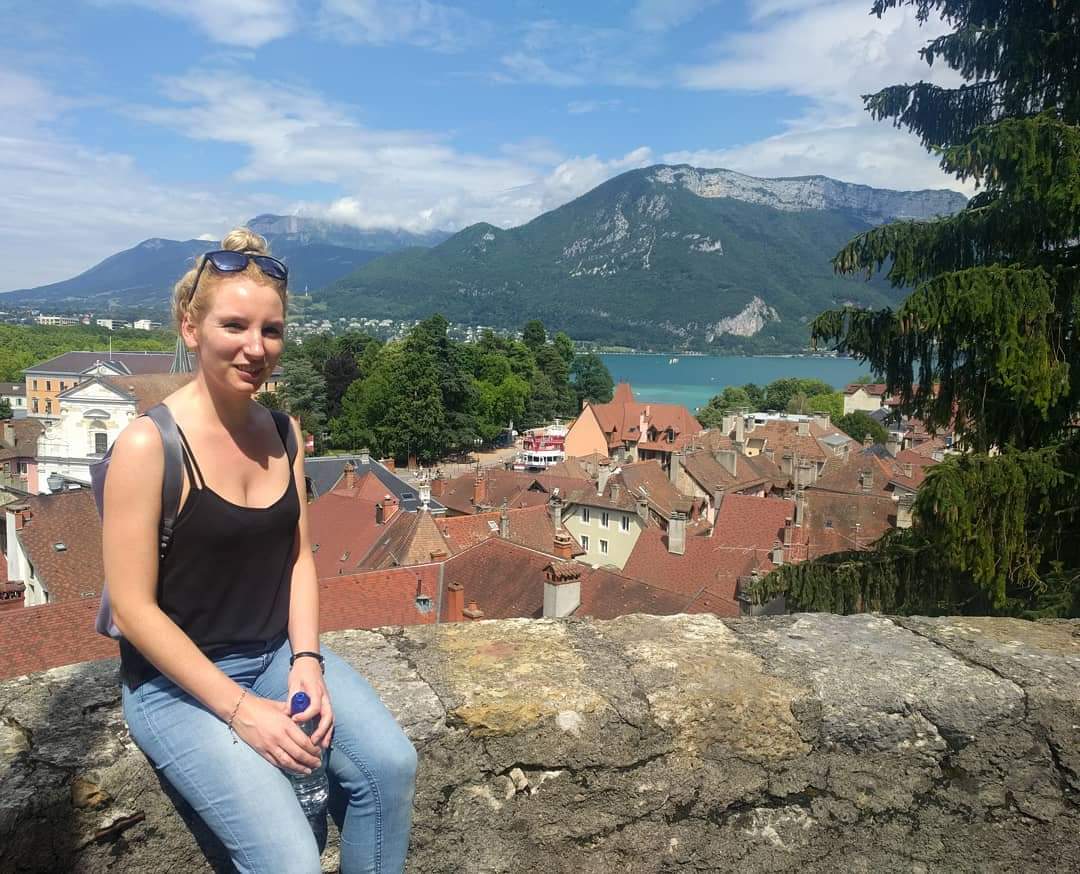In 2019 SELMA is welcoming two new postdoctoral scholars: today we introduce AVRIL TYNAN, conducting her research in comparative literature at TIAS where she is working on her project ‘Father or Failure: Fathers in Francophone Literature and Film since 1945’. Her background is in French literature and Holocaust studies, and she has published on the ethics and aesthetics of Holocaust narrative. She has previously taught French language and culture at Royal Holloway, University of London. Here is a little glimpse in her work:
THE TATOO HERMENEUTIC: RETHINKING READING
In 2010 I was living in Brighton in the UK, working nights in retail, and academia was the last thing on my mind. But when the guy I had been dating for a few months got a new tattoo, I started thinking about how we tell stories, how we create and understand the stories that surround us, and how our bodies, our selves, are enmeshed in the narratives of others. This tattoo – a reminder of some of the good times we’d had together – was now a part of the wider story told by his other tattoos, each one linked to a time, a place, a person, a memory.
A year later we broke up, and I thought again about that tattoo: what story did it tell now? How was its link to time and place, to Brighton, to 2010, to the world we had lived in at the time changed by these events? Our break up had been amicable, but what if it hadn’t been? How would that affect the way he now told its story to others, to the next girl he dated? Of course, this made me realize that all of his stories had, in the first place, been subjective, influenced by his emotions at the time or later, and that each story would rarely be told in an identical way to an identical listener. Indeed, my own interpretation of each of his tattoos was not only influenced by the story he told me, but by my own history, my own experiences and memories, and that each interpretation can be altered, influenced, reinterpreted over time.
But was the influence of interpretation only present at the point where the story was read or told? Was it not the case that the tattoo was already subject to the interpretation of its bearer? A personal choice to remember a certain event, person or experience in a certain way? Was the tattoo itself really anything more than a vehicle for interpretation, an empty aesthetic that can only truly take shape through interpretation and reinterpretation? What did that tattoo really tell you about that guy? About that time? About that place? About me?
When I later rejoined academia, this way of thinking about tattoos became apparent in the reading of narratives, too, and particularly in the field of hermeneutics. Everything we read – be it text or tattoo – is subject to interpretation, but everything we interpret has already been subject to the interpretations of the author, the narrator, the storyteller.
And there was another level to this reading of the tattoo. When this guy chose to get each of his tattoos, he knew that each one was going to be on his body forever. That it would be seen by others, that it would provoke questions and conversations. That it could mislead, deceive, lie, just as much as it could represent; it could be truthful, without telling the whole truth. However private we believe tattoos to be, often, they are quite the reverse. A tattoo is a deliberate (re)presentation, showing what you want to be seen at the time, and while we may sometimes be aware of this when we think about tattoos, we rarely bear it in mind when we think about narratives. But what if authors too were manipulating words just as the tattoo may manipulate our interpretations? Just as a tattoo today is personal choice, so too are the words written by an author, carefully selected and manipulated, choreographed into narrative sequence.
When we read, we read the words on the page – this is how we are taught to read – and we read the words all the while expecting them to tell us something. But the author knows this too. But what if the story the author writes were only a distraction, a way of focusing the eye elsewhere, otherwise than the story he or she wants – or doesn’t want – to tell? Reading is not only about reading what we are given, but about reading beyond what is evident as text, reading the gaps and absences in every narrative.
That tattoo, back in Brighton in 2010, tells a story, and it will always tell a story, though not always the same story, and never the whole story, and only ever one part of a bigger story that is still being written. There is so much missing that isn’t being shown, that is, more importantly, being hidden behind the very image that purports to tell us so much. In presenting that one image, we are distracted, as readers of other people, from asking what is not there: why not a different image? Why not a different time? We never ask questions like that. But our processes of reading need to think about what is absent as much as what is present: not just ‘what do we know about this?’ but why this and not that?


